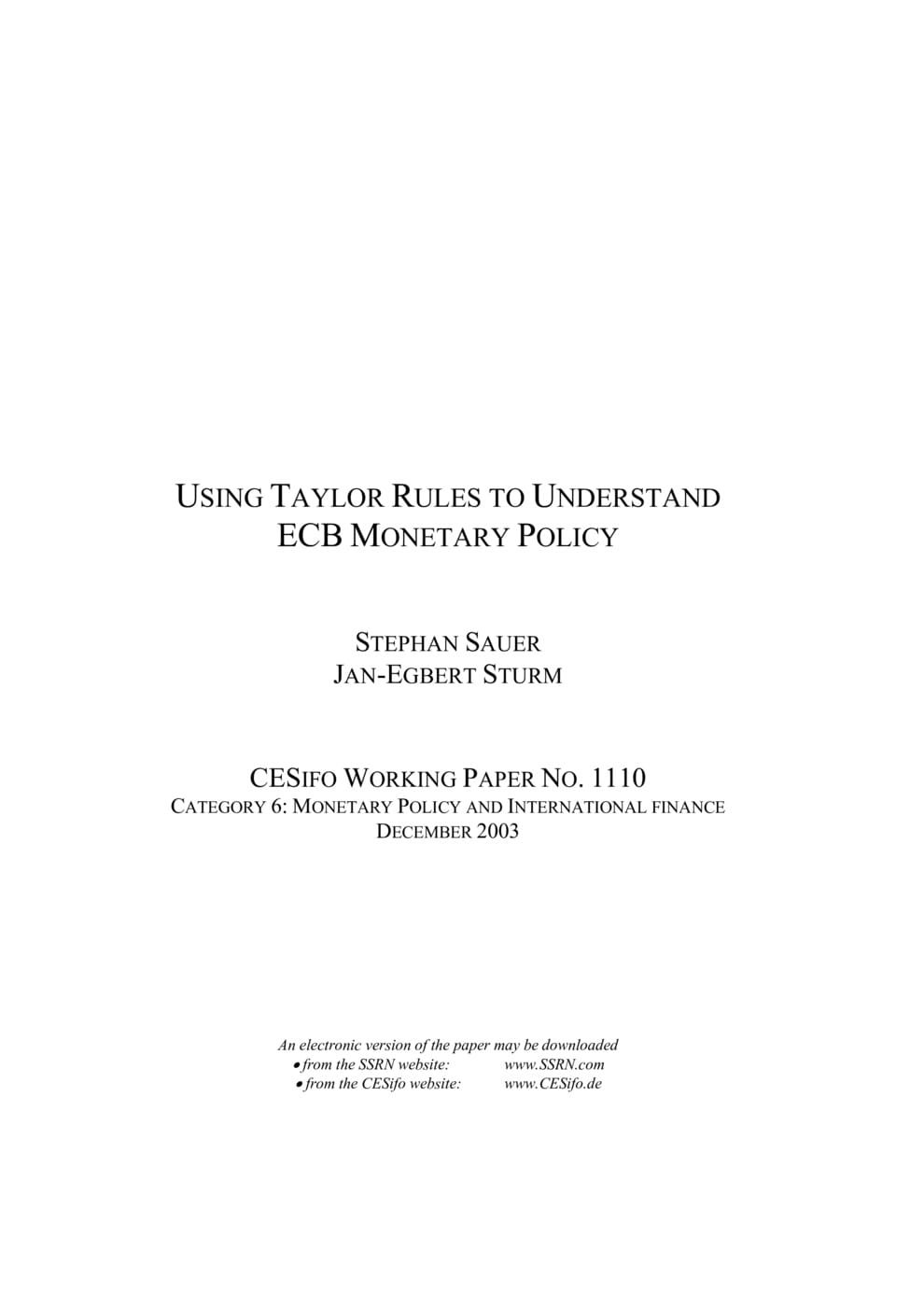Using Taylor Rules to Understand ECB Monetary Policy
CESifo, Munich, 2003
CESifo Working Paper No. 1110

Over the last decade, the simple instrument policy rule developed by Taylor (1993) has become a popular tool for evaluating monetary policy of central banks. As an extensive empirical analysis of the ECB’s past behaviour still seems to be in its infancy, we estimate several instrument policy reaction functions for the ECB which might shed some light on actual monetary policy in the euro area in the recent past and answer questions like whether the ECB has actually followed a stabilising or a destabilising rule so far? Looking at contemporaneous Taylor rules, the presented evidence suggests that the ECB is accommodating changes in inflation and hence follows a destabilising policy. However, this impression seems to be largely due to the lack of a forward-looking perspective in such specifications. Either assuming rational expectations and using a forward-looking specification, or using expectations as derived from surveys result in Taylor rules which do imply a stabilising role of the ECB. The use of real-time industrial production data does not seem to play such a significant role as in the case of the U.S.
Monetary Policy and International Finance